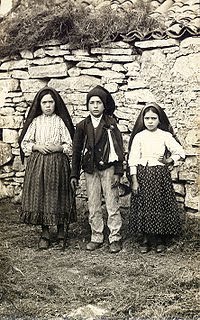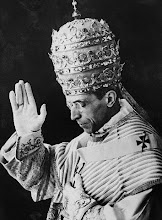Saturday, November 9, 2013
Archbishop Annibale “Bugsy” Bugnini
Archbishop Annibale Bugnini, Titular
Archbishop of Diocletiana, 1972-1982.
Annibale is the Italian name for
“Hannibal”, the Carthaginian general who was the hero of the Second Punic War
(213-208 BC) and the fiercest enemy of ancient Rome. (1)
Bugnini was the titular (2) archbishop of
Diocletiana (3), a name from history that should strike fear into the heart of
Christians. The persecution of the Roman emperor Diocletian (4) was the last of
the Christian persecutions in ancient times and was known as “the Great
Persecution” due to its ferocity.
-------------
NOTES:
(1)
Hannibal was a famed military strategist who brilliantly marched his army,
which included war elephants, from Spain over the Pyrenees and the Alps into
Italy in the campaign against Rome and occupied most of Italy for 15 years. He
was defeated by Scipio Africanus in the Battle of Zama in 202 BC using many of
the strategies that the Romans had learned from him. The ancient city of
Carthage (near modern day Tunis) was known for its idolatrous religion of child
sacrifice.
(2)
Titular dioceses are those ancient dioceses which had fallen into the hands of
infidels (in partibus infidelium) and which no longer constitute an
actual physical diocese governed by a resident bishop. The names of these
essentially vacant dioceses are only used as titles, hence the term “titular”,
for certain prelates who are appointed bishops or archbishops without an actual
diocese to govern, i.e., vicars Apostolic, auxiliary bishops,
administrators Apostolic, nuncios, Apostolic delegates.
(3) The
ancient diocese of Diocletiana was in the Roman province of Dardania, modern
day Macedonia, and generally encompassed the modern city of Skopje.
(4) Though not the first Roman
Emperor to persecute Christians (e.g., Nero, Decius, Valerian) Diocletian (r.
284-305) styled himself a “religious reformer” over against the rising
influence of Christians in the Roman Empire. He sought to reestablish the old
pagan religion and worship in the Empire. He first purged the military of
Christians and then beginning in A.D. 303 issued a series of decrees outlawing
Christianity, effectively forcing Christians into idolatrous worship, for which
the penalty of refusal was jail, destruction of Scriptures and churches,
confiscation of property, torture, and death. The persecution was the last and
most severe persecution in the Roman Empire against Christians and is known as
“the Great Persecution” in history books. It was only effectively ended by the
“Edict of Milan” in A.D. 313 and the ascension of Constantine who legalized and
authorized Christianity for the whole of the Roman Empire.
Subscribe to:
Post Comments (Atom)











No comments:
Post a Comment